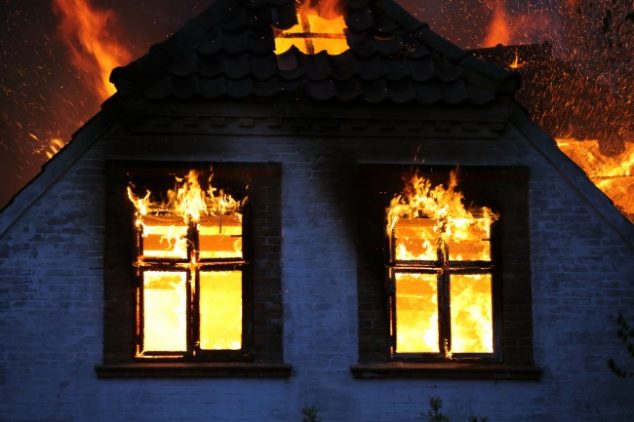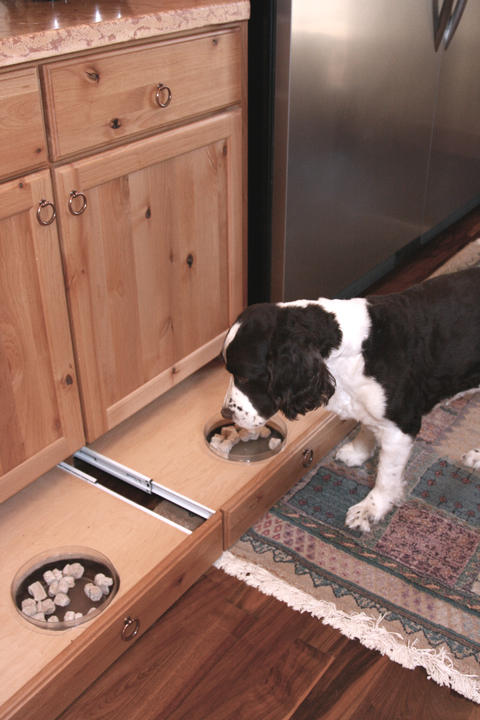
Fire Prevention, Preparedness & Recovery
Home Advisor

On This Page:
Introduction
Fire prevention and preparation are crucial to decreasing the number of injuries and deaths from this disaster. In 2012, there were 2,855 deaths and 16,500 injuries across the United States related to fires.1 To combat this, people need to be educated in responses and steps to take to avoid or respond to fire, should it occur. Those most at risk for fire injuries include children under the age of 5 and those over 54, according to FEMA.2 Pets are also at risk for injuries from fires, especially if the right steps are not taken at home to help protect them.
To help homeowners and firefighters decrease the risk of fires, we have prepared a resource guide specifically for kids, seniors and pets on the necessities of fire prevention, preparedness and, when needed, recovery. Below includes sections for each group on how to prevent home fires, how to prepare for fires should they start, and steps to take after the fire is extinguished. It is also important to talk to your local firefighters if you have additional questions about fires and preparing your home or family members (including the furry ones) for them.
Kids
Prevention
 When it comes to fire prevention for kids, a lot of the responsibility falls on parents and teachers to set the example. Parents need to make sure the home is protected against any fires being started by children accidentally. Some possible causes include loose or frayed cords and plugs, overloaded outlets, overused extension cords, incorrect wattage bulbs, or old circuit interrupters.3 It only takes children touching one of these or hitting them once for a spark to go off and start a fire, so take steps or hire an electrician to prevent these from happening. Children should also be taught from a young age not to handle electrical items like home appliances, space heaters, and other items that could be used to start a fire. If you have friends over who smoke or use lighters and matches in any way, they should be asked to use them outside and keep such items away from your children as well. 4
When it comes to fire prevention for kids, a lot of the responsibility falls on parents and teachers to set the example. Parents need to make sure the home is protected against any fires being started by children accidentally. Some possible causes include loose or frayed cords and plugs, overloaded outlets, overused extension cords, incorrect wattage bulbs, or old circuit interrupters.3 It only takes children touching one of these or hitting them once for a spark to go off and start a fire, so take steps or hire an electrician to prevent these from happening. Children should also be taught from a young age not to handle electrical items like home appliances, space heaters, and other items that could be used to start a fire. If you have friends over who smoke or use lighters and matches in any way, they should be asked to use them outside and keep such items away from your children as well. 4
Another step is teaching children the importance of fire safety through planning and drills. Ready.gov is a helpful resource for parents and educators to use when teaching kids how to prevent fires, with games and facts that are fun for kids.5 Sparky the Fire Dog is another popular resource that teachers use for teaching children about fire prevention and safety, with a website that includes activities, cartoons and even an app to make fire safety lessons more enjoyable for kids while being educational.6 Many other resources, like Fire Safe Kids, Operation Lifesaver, Club Fire Facts, Smokey the Bear, can be used by teachers and parents to help children understand why it is important to stay away from fire and what to do to prepare should one ever start in the home or at school.7
Preparedness
To prepare kids for a fire, one of the first steps is to make a plan. With the possibility of a home fire, parents need to a make an escape plan with their children so they know what to do if one occurs. Parents should discuss and then practice the escape plan with their children a few times so their kids know exactly what to do should a fire occur in the home. This plan should follow several steps, including:
- There should be several escape routes from the home.
- There should be a specific meeting place outside (tree, lamp post, neighbor’s fence, bush across the street, etc.).
- Children should know not to hide when the smoke alarm goes off but instead proceed with the escape plan. It helps if parents make them familiar with the sound of the alarm by pushing the button to set it off a couple of times.
- They should be taught how to feel the door knob for whether it is hot or not and how to exit a different way if it is.
- Kids should also be taught not to go back into the burning building for any reason.8
When practicing this escape plan, be sure to treat the practice as if it were the real thing. Parents should push the smoke alarm to make it go off like it would during a fire. Then everyone should touch door knobs and crawl rather than walk, like they would during a fire. This helps kids get in the habit of what they would be doing during a real fire, which helps should one actually happen. Parents can even draw the house escape plan on a grid and post it on the refrigerator if it helps children remember it.9
The other two most important steps to fire preparation are the stop, drop and roll technique and calling 9-1-1 if a fire occurs. Children should learn how to stop, drop and roll for when their clothes or anything on their body catches on fire. Parents and teachers should demonstrate this technique for them and then have kids practice it a few times. Then, kids need to know how to call 9-1-1 whenever they see a fire, whether it is in the home on the stove or across the street at a neighbor’s house. It should become an automatic response to an emergency, even outside of a fire.10 Visiting a local firehouse is also another good way for kids to learn more about fire preparation and get answers to questions they might have from the professionals who deal with it every day.
Recovery
After a fire does happen, it is important for parents and teachers to take steps toward helping children recover from the experience. Kids have been known to react differently to fires, anywhere from anxiety to nightmares and sleep disorders from the experience. Parents have to handle the crisis appropriately so children know it is something to not fret too much over and work through in a positive manner, rather than stay afraid of for a long time.11 Some signs that parents should be aware of after a fire in their children are:
- Increased anxiety about loved ones
- Anxiety around fires
- Separation anxiety
- Irritation and temper tantrums
- Withdrawal
- Headaches and stomach aches
- Lower school grades
- Sadness and depression12
The key in these situations is for parents to talk to children and help them work through the fear and anxiety they feel following a fire. If parents need to find new housing following a fire, do not put the children with friends or relatives. Try to keep them with you as long as possible, because it helps decrease their anxiety. Be sure to explain things as you are working to get everything back in order and try to get them to talk to you so they get their fears out in the open rather than bottled up inside.13
Children’s reactions will vary by how old they are, so it is important to take steps depending on that. For example, children who are infants will react differently than children in their adolescence. Their ability, or lack thereof, to express their reactions after a fire determines how to help them cope.14 Regardless of their age, parents should restore feelings of security through physical contact, re-establish daily routines, and restore a state of normalcy as soon as possible so children feel safe again in their environment.15
Seniors
Prevention
 Older adults over 54 are at higher risk for fire injury and death for a variety of reasons including slower reaction time, medication that slows them down, and the possibility they live alone and cannot be helped.16 As such, they need to take many steps to protect themselves in case of a fire and prevent it from happening except in the most extenuating circumstances.
Older adults over 54 are at higher risk for fire injury and death for a variety of reasons including slower reaction time, medication that slows them down, and the possibility they live alone and cannot be helped.16 As such, they need to take many steps to protect themselves in case of a fire and prevent it from happening except in the most extenuating circumstances.
Some steps seniors can take to prevent fires in their homes are:
- Install an additional smoke alarm in the home and keep them in good shape.
- Wear close-fitting sleeves and shirts when cooking.
- Do not overuse electrical outlets.17
- Do not leave hot pans unattended.
- Put lids over stovetops when not in use.
- Do not smoke around oxygen tanks or in bed.
- Plan a fire escape from your home or apartment.18
If an older adult lives alone, they should talk to their neighbors about their fire escape plans in case a fire breaks out, so neighbors will be able to help them in case they cannot get out. It is also a good idea for older adults to live on the bottom floor or near an exit of apartment building for easier escape during a fire. Be sure to also have emergency providers keep your records on file for special needs, if you have any, in case they need to come out during a fire to your home.19
Preparedness
In case of a fire, seniors should have several things prepared so that they are not caught unaware. They should have a phone or a TTY/TDD device next to their bed on a nightstand or end table within reach to call for help. Eyeglass, keys and hearing aids, if needed, should also be on the nightstand for easy access. If you smell smoke and need to access the kitchen or living room, a lamp or light switch should be easily within reach to avoid tripping or failing. Be sure to keep stairs and hallways clear for quick exit during a fire as to avoid getting trapped by burning debris.20
To also prepare for a fire or any other disaster, you should post a list of relatives or medical doctors near the phone or on the fridge who should be contacted in case something happens during the fire where you are injured. Any kind of special equipment you use should also be easily accessible for yourself and the emergency personnel to get to you if they need to get inside. Anyone who might need to help you, like nurses, family or neighbors, should know how to find and use these items in case they need to assist you during a fire as well.21 It is also a good idea to practice your escape plan several times and know more than one escape route in case the first is blocked for whatever reason.
Recovery
After a traumatic event like a house fire, older adults will often take longer to recover and return to normalcy. Some of the most common signs that people will see and need to be aware of in older adults after a fire include:
- Confusion
- Disorientation
- Fear of being placed in a senior care facility
- Withdrawal
- Apathy
- Anger
- Grief22
It is important for them to have a strong support network whether it comes from family, neighbors, friends or their local clubs and organizations. If they do not, often seniors will start to decline in health and mental stability, which could lead to hospitalization or other major problems in the long-term. Family members and friends should help them return to their normal routines and be there for them to talk about the experience. The more they work through the trauma, the easier it will be for them to return to normalcy.
Pets
Prevention
Did you know that almost 1,000 house fires are caused accidentally by pets? Homeowners do not always think about some flammable item they leave accessible and then their pet accidentally knocks it over, causing a house fire. To avoid this problem in your home, take these preventative measures with your pets:
- Put out open fires.
- Remove or cover over stove knobs.
- Buy flameless candles with bulbs.
- Crate young pets when leaving home for work or errands.23
- Install monitored smoke detectors.
- Write down the number inside and stick up a pet rescue sticker for firefighters.
- Secure wires, cords, and outlets.24
 Remember, pets are curious creatures who like to investigate anything that smells or looks interesting to them. So help them avoid investigating the strange smell of a fire by taking these steps to avoid the start of one. Animals do not have the hands to put out a fire on their own or the knowledge to call 9-1-1. If they are home alone and a fire starts, it will be on a smoke alarm and a firefighter to rescue them and then call you to make you aware that it happened, and your pet is safe.
Remember, pets are curious creatures who like to investigate anything that smells or looks interesting to them. So help them avoid investigating the strange smell of a fire by taking these steps to avoid the start of one. Animals do not have the hands to put out a fire on their own or the knowledge to call 9-1-1. If they are home alone and a fire starts, it will be on a smoke alarm and a firefighter to rescue them and then call you to make you aware that it happened, and your pet is safe.
Preparedness
It is harder to prepare a pet for a fire as compared to older adults or children. According to the Ann Arbor News, the best way to prepare a pet is to include them in the fire escape plan. That means having a leash or carrier near the door to easily transport the pet out with the rest of the family during the emergency. It makes it easier to control the cat or dog rather than try to herd them out. A dog can also be trained to understand the importance of the smoke alarm going off by practicing the smoke alarm going off and doing the escape plan with the animal. Like a child, this puts the dog in the habit of understanding and associating the smoke alarm with a routine.
Another major way to integrate the animal with the fire escape plan involves the child or kids. Often, an animal will sleep near them, so it will be easier to find the cat or dog near the kid rather than looking all over the house for them. In such cases, homeowners should consider putting the carrier or leash near the child rather than near the front door. If the child is old enough, they can be given the responsibility to leash the dog or put the cat in the carrier to get them outside.
Other options to consider for preparing an animal for fire escapes are:
- Dog doors
- Outdoor dog pens
- Knox box
- Pet oxygen mask
- Crate near the front door25
Recovery
Animals will usually react to a fire or any other kind of disaster by being scared or traumatized for a while. Their reactions range from biting and scratching people or furniture to urinating and defecating on the floors.26 In such cases, owners need to be attentive and comforting, keeping them calm and providing them with love so they understand that everything is fine and normal again. Pets should not be brought back into a home until all smoke and fire damage has been repaired.
The mainstay for helping pets recover from fires is getting them back on a routine. Using their favorite toys, the usual diet of food and water, regular play, and calm, pets will eventually calm down and get back to normal. If you are still uncertain about their mental health, you can always take them to a veterinarian to see if they might need sedatives or other medication to help them calm down.
Additional Resources
- FEMA 2012 National Fire Protection Association Estimates
- FEMA 2004 Fire Risk
- Kids Health Fire Safety
- New York Health Children’s Fire Injury Prevention (by age)
- Ready.gov Fire Safety for Kids
- Sparky the Fire Dog
- Minneapolis Kids’ Fire Safety Resources
- Tips in Preparing Children to Escape Fire
- Preparing a Home Fire Escape Plan
- Talking about Fire Safety with Your Children
- APA: Recovering emotionally after a residential fire
- Residential fires
- Helping Children Cope with Disasters
- Helping Children Cope with Disaster: A Child’s Reaction to Disaster by Age
- How to Help Children Cope Following a Disaster
- Safety Tips for the Seniors/Disabled
- Senior Fire and Burn Safety
- Senior Fire Safety
- Older Ohioan Fire Safety Tips
- Fire Safety for Seniors
- Emergency Plan Considerations for Senior Citizens
- Elderly Disaster Care
- Pet Fire Safety
- Five Fire Safety Tips for People with Pets
- Fire Prevention Week 2010: Your Guide to Pets and Fire Safety
- Fire Recovery
